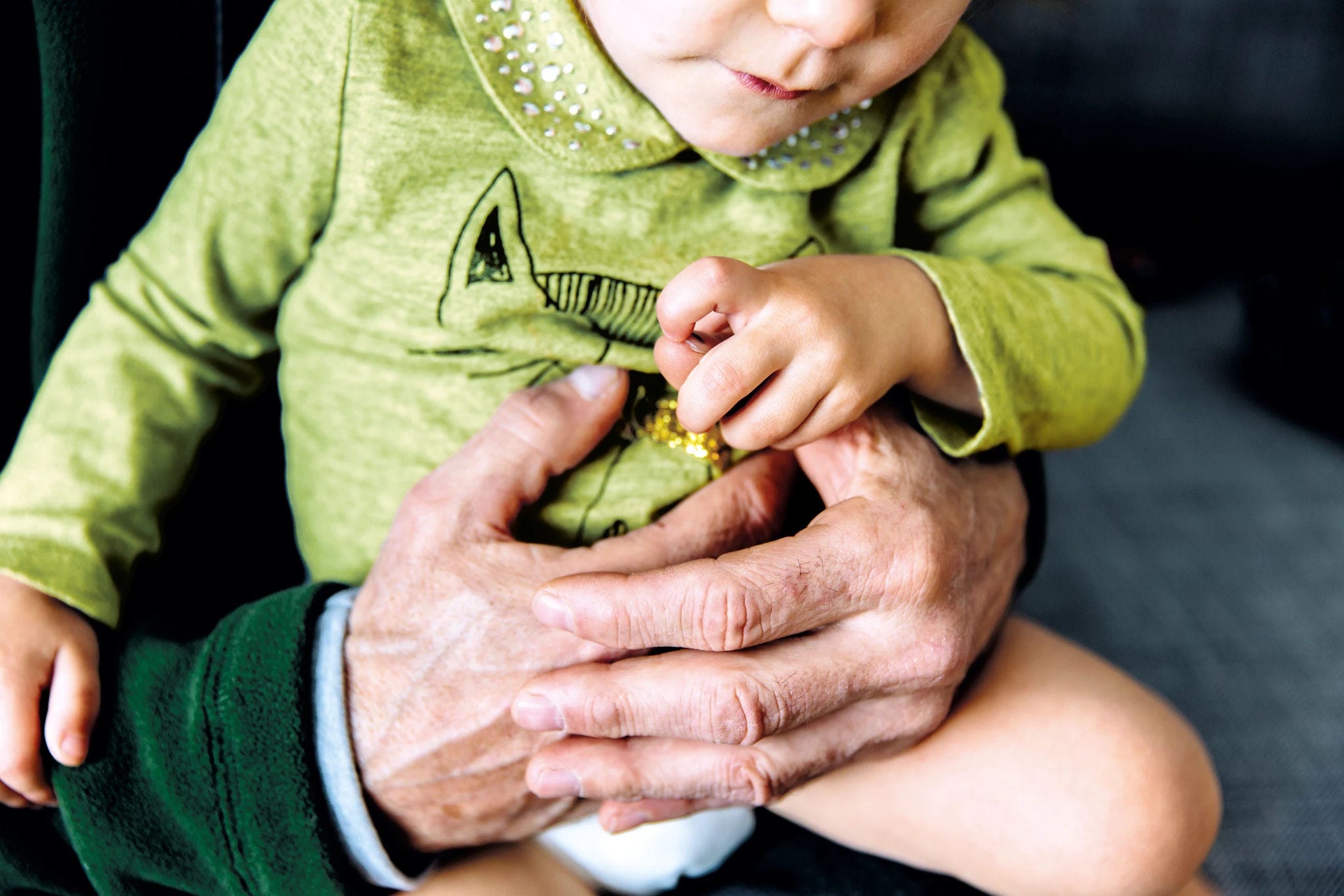Free weaning plan - Register here
Last reviewed: 21st January 2020
Reviewed by Nutricia’s Medical and Scientific Affairs Team
Cow’s milk allergy and lactose intolerance are when your baby reacts badly to milk. Cow’s milk allergy affects around 2-8% of babies during their first year1 and although they’re different conditions, it’s easy to get them confused.
Read more about the difference between a cow’s milk allergy and a lactose intolerance, signs and symptoms to look out for, how they’re diagnosed and what you can do if your baby has one.
Introducing your baby to different foods? Read about food allergies & intolerances during weaning.
What’s the difference between an allergy and an intolerance?
When to see a doctor
It’s important you get your GP to diagnose an allergy if you suspect your baby has one.
Signs and symptoms of a cow's milk allergy
Signs and symptoms of lactose intolerance
These can happen within minutes or sometimes days after your baby has consumed milk:
- Painful tummy cramps.
- Vomiting, diarrhea or constipation.
- A rash, hives or eczema.
- Difficulty breathing.
Symptoms of a lactose intolerance are generally associated with your baby’s digestive system, and include:
- An upset tummy (this is often the main symptom of lactose intolerance).
- Diarrhea and excessive wind.
- A bloated tummy.
Use our Baby Symptom Checker to get practical advice and support, as well as a handy summary of your baby’s symptoms which you can take along to your GP.
The 3 main types of lactose intolerance
- Congenital lactose intolerance
- Primary lactose intolerance
- Secondary lactose intolerance
This is an extremely rare condition, when a baby is born without the ability to produce lactase, the enzyme which breaks down the lactose in milk. As breastmilk contains lactose, babies are naturally designed to be able to digest it. That’s why congenital lactose intolerance is not very common in babies.
This is an inherited condition which leads to a deficiency in lactase. It doesn’t usually occur before the age of two or three and is more common in countries where dairy foods aren’t eaten as much.
This is when the production of lactase is temporarily reduced because the cells in the gut that make it are damaged. This can happen after an infection, like gastroenteritis or persistent diarrhoea. Things usually get back to normal after a few weeks, once your baby’s gut health has improved.
Developmental lactase deficiency
In addition to these three main types of lactose intolerance, there is also developmental lactase deficiency, which effects some premature babies. Babies with developmental lactase deficiency are unable to produce enough lactase to break down the lactose in milk in their early days of life, but this generally improves as they get older.

Diagnosing a cow’s milk allergy or lactose intolerance
If you suspect your baby has a cow’s milk allergy or lactose intolerance, you’ll need to get it checked out by your GP. They’ll ask you a number of questions, such as:
- What are the symptoms?
- When did the symptoms start?
- How severe are they?
- How long do they last?
- What sort of milk are you feeding your baby?
- Do you, your partner or other children have any allergies or intolerances?
It can be helpful to keep a diary of symptoms and reactions to take to your appointment with you.
If your GP thinks your little one has a cow’s milk allergy or lactose intolerance, they may need to alter your baby’s diet to confirm it. They’ll be able to advise you on what to eat if you’re breastfeeding, or which formula to use if you’re bottle-feeding.
Take care of you: Happy mum, happy baby
Dealing with a baby who has a cow’s milk allergy can be difficult. It’s reassuring to know that while some allergies can last into adulthood (particularly if they run in the family2), your baby will most likely have grown out of it by the time they’re three years old.
Lactose intolerance, on the other hand, can last for as little as three to four weeks. Particularly of it’s a temporary intolerance caused by a tummy bug.
Whatever you’re going through, you’re not alone. Make an appointment with your Health Visitor or GP to talk about any concerns you have. And remember, our dedicated team are always at the end of the phone to offer one-to-one support and advice whenever you need it.
- Carina Venter, et al. Clinicl and Translational allergy 7: article No. 26: Better recognition, diagnosis and management of non-IgE-mediated cow’s milk allergy in infancy: iMAP—an international interpretation of the MAP (Milk Allergy in Primary Care) guideline. [ONLINE]. Available at: https://ctajournal.biomedcentral.com/articles/10.1186/s13601-017-0162-y
- NHS UK: Causes of lactose intolerance. Reviewed: 25 February 2019 [ONLINE]. Available at: https://www.nhs.uk/conditions/lactose-intolerance/causes/
Related articles
Need free advice with a smile? Get in touch with our dedicated Care team.
Ask us a question (8am - 8pm Monday to Friday, 10am - 4pm Weekends)
Messenger
Contact us on Facebook (10am - 10pm, 7 days a week)
Call us
Call us on 0800 977 8880 (8am - 8pm Monday to Friday)
FAQs
Get answers to your most frequently asked questions








